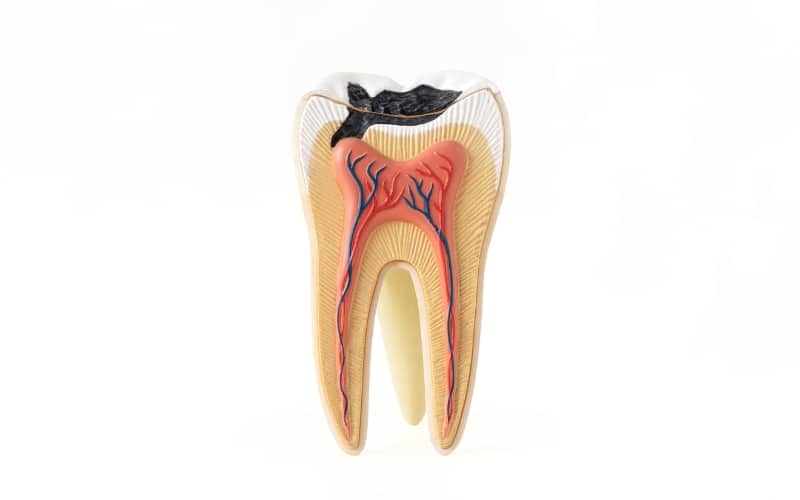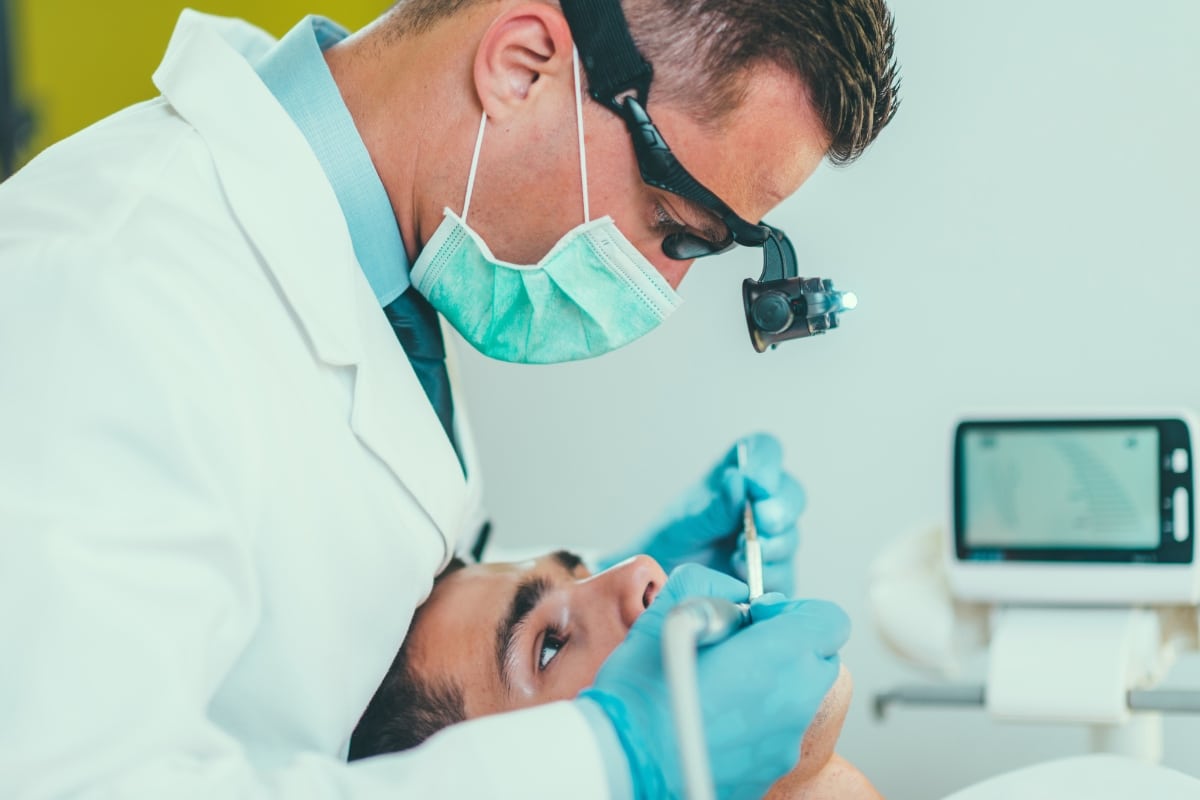New Patients Welcome!

Dental trauma can happen unexpectedly and for various reasons. Sports injuries, accidents, and falls frequently cause teeth damage. These incidents can result in cracked, chipped, or even dislodged teeth.
Immediate treatment is critical to save a damaged tooth and prevent long-term complications. Many people think losing the tooth is the only solution after a serious injury. However, root canal treatment can effectively save traumatically injured teeth.
This procedure relieves pain and preserves the natural tooth. Understanding how dental trauma affects teeth and how root canals work can help you make informed decisions if you ever face such a situation.
What Happens Inside a Traumatically Injured Tooth?
Damage to the Tooth Pulp
The pulp, which houses connective tissue, blood arteries, and nerves, is located inside each tooth. Dental trauma can damage this soft tissue. When the tooth pulp is harmed, it may become inflamed or infected, leading to severe discomfort. Cracks or fractures allow bacteria to enter, further complicating the situation.
Signs of Pulp Damage
Several symptoms may appear with a damaged tooth’s pulp. You might experience severe pain, especially when chewing or touching the tooth. A further cautionary indicator is an increased sensitivity to hot or cold temperatures. The tooth may become discolored, often turning gray or dark yellow. Swelling and tenderness around the gums are also common signs.
Potential Consequences of Untreated Trauma
Ignoring a traumatically injured tooth can lead to severe complications. Without treatment, the damaged pulp can become infected, potentially causing an abscess (a painful, pus-filled infection).
The infection may eventually extend to the jawbone and other nearby regions. Untreated trauma may, in severe situations, result in the loss of the afflicted tooth. Early intervention prevents these complications and saves the tooth.
How Root Canal Procedure Saves Injured Teeth
- What is Root Canal Treatment?
Root canal therapy is a dental procedure that treats damaged or infected tooth pulp. To stop more infection, the injured tissue must be removed, the region must be cleaned, and the area must be sealed. This therapy allows patients to keep their natural tooth rather than extracting it. - When is a Root Canal Needed After Trauma?
A root canal is often required when a tooth’s pulp has been damaged by trauma. Injuries such as deep fractures, cracks, or dislodgment of a tooth can expose or harm the pulp. The only way to keep the tooth intact when the pulp gets infected or inflammatory is to have a root canal.
Other signs that a root canal is necessary include persistent pain, swelling, or a change in tooth color. If the tooth feels loose or is sensitive to touch, it might also require treatment.
- The Procedure for Root Canal Treatement Step-by-Step
Root canal treatment involves several stages:- Diagnosis: The dentist first evaluates the extent of the damage. X-rays help detect issues inside the tooth. The procedure begins after getting the confirmation of the need for a root canal.
- Removing the Damaged Pulp: The dentist drills a small hole in the tooth to access the pulp. All damaged or infected tissue is carefully removed from the pulp chamber and root canals.
- Cleaning and Disinfecting: After removing the pulp, the dentist thoroughly cleans and disinfects the tooth’s interior to remove any bacteria. In order to stop infections in the future, this step is essential.
- Sealing the Tooth: Once cleaned, the dentist fills the tooth’s interior with a biocompatible material called gutta-percha. This helps stabilize the tooth. The access point is then sealed.
- Restoring the Tooth: To protect the treated tooth, a crown or filling is placed over it. This restoration strengthens the tooth and ensures its functionality.
- Why is a Root Canal Effective for Dental Trauma?
Teeth that have been severely damaged can be effectively treated and saved with root canal therapy. It removes the source of pain, such as damaged pulp and infection. This process allows the tooth to remain in place and continue functioning normally.
One major benefit of the root canal procedure is that it not only prevents the need for extraction but also helps maintain the integrity of the jawbone. Keeping the natural tooth in place prevents adjacent teeth from shifting. Moreover, preserving natural teeth promotes long-term oral health and thus prevents the need for more complex procedures like implants or bridges.
The Importance of Early Intervention
Immediate Steps After a Dental Injury
If you experience a dental injury, immediate action can save the tooth. To clean the region, rinse your mouth with warm water. Avoid applying pressure on the injured tooth. Handle a knocked-out tooth by its crown and attempt to replace it, or place it in milk until you can see a dentist.
Why Does Seeing a Dentist Promptly Matter?
Early diagnosis can prevent further damage or infection. Delaying treatment increases the risk of complications. Quick intervention allows for less invasive treatments and preserves more of the tooth’s natural structure.
The Role of Dental Imaging in Trauma Cases
Dental X-rays or other imaging tools help assess the extent of internal damage. Moreover, these images provide a detailed view of the pulp and surrounding bone. Furthermore, dentists use this information to plan effective treatment strategies.
Post-Treatment Care and Recovery
What to Expect After Root Canal Therapy?
After root canal treatment, mild discomfort is normal. Your tooth may feel sore or sensitive for a few days. Painkillers available over the counter can assist in treating these symptoms.
Tips for Recovery
Till the permanent restoration is in place, refrain from biting into the treated tooth. Stick to soft foods and maintain proper oral hygiene to avoid infection. Rinse your mouth gently with warm salt water to soothe any swelling.
Long-Term Care for the Treated Tooth
Follow-up visits are essential to ensure the tooth heals correctly. Avoid habits like grinding teeth, as these can weaken the treated tooth. Good oral hygiene and regular check-ups will keep your tooth healthy and strong.
Preventing Future Dental Injuries
Tips for Reducing the Risk of Dental Trauma
Wearing a mouthguard during sports can significantly reduce the risk of dental trauma. Be mindful of your surroundings and avoid biting hard objects like ice. Practicing good oral hygiene will keep your teeth strong and more resistant to injury.
Importance of Regular Dental Check-Ups
Regular dental visits can help identify any problems early. Dentists can monitor previously injured teeth and provide advice on preventing future trauma. Early detection of issues often means simpler, less invasive treatments.
Root canal treatment is a reliable way to not only save traumatically injured teeth but also preserve the tooth, relieve pain, and prevent future complications. Furthermore, immediate dental care after an injury can make a big difference in the outcome. Therefore, if you experience a dental injury, do not hesitate to contact a dentist right away. By doing so, you will be saving your natural tooth, which will benefit your long-term oral health. In conclusion, schedule a consultation today in order to address any concerns and keep your smile healthy.




